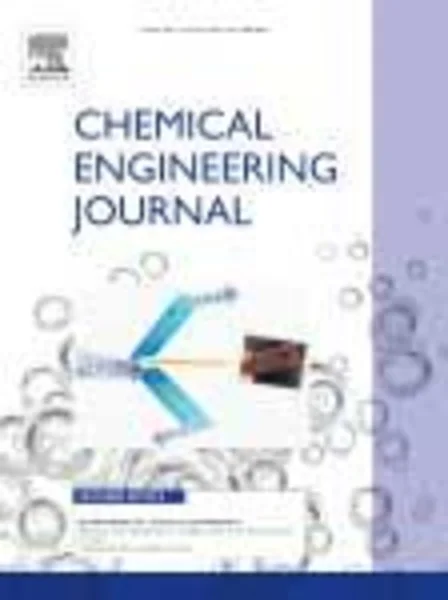-
supercritical-phase-assisted highly selective and active catalytic hydrodechlorination of the ozone-depleting refrigerant chclf2
جزئیات بیشتر مقاله- تاریخ ارائه: 1392/01/01
- تاریخ انتشار در تی پی بین: 1392/01/01
- تعداد بازدید: 496
- تعداد پرسش و پاسخ ها: 0
- شماره تماس دبیرخانه رویداد: -
catalysis in the supercritical fluids has been interested because of its high activity, high selectivity along with an easy purification of its products. not using frequently-used supercritical inert solvents such as carbon dioxide and light hydrocarbons but using a supercritical mixture of reactants, we demonstrate highly active and highly selective catalytic hydrodechlorination of the ozone-depleting refrigerant chclf2 (hcfc-22) to the ozone-inert ch2f2 (hfc-32). performing catalysis using a continuous-flow reactor with 66 wt.% ni on silica–alumina, 5 wt.% pd on γ-alumina and 5 wt.% pd on activated carbon catalysts, we observe 95.9% conversion of hcfc-22 and 88.6% selectivity to hydrodechlorinated hfc-32 (which corresponds to 85.0% hfc-32 yield) over fully hydrogenated methane at 400 °c and 100 bar, which is the highest hfc-32 yield ever reported. the effects of the supercritical fluid on the improved catalytic activity and selectivity are discussed by characterizing spent catalysts using transmission electron microscopy (tem), x-ray diffraction (xrd), and x-ray photoelectron spectroscopy (xps). because of the beneficial properties of the supercritical fluid in catalysis, the deactivation of the pd on activated carbon catalyst by the existence of catalyst-poisoning palladium carbide (pdcx) and f/cl compounds is minimized, which can increase the catalytic activity. in addition, the faster desorption of hfc-32 by the negligible mass transfer barrier may increase the selectivity to hfc-32 and inhibit the further conversion to the fully hydrogenated methane. the highly active and highly selective catalytic hydrodechlorination in supercritical condition can benefit new chemical processes that reduce the unwanted byproducts, resulting in high productivity of the desired chemicals.
مقالات جدیدترین رویدادها
-
استفاده از تحلیل اهمیت-عملکرد در ارائه الگوی مدیریت خلاقیت سازمانی و ارائه راهکار جهت بهبود
-
بررسی تاثیر ارزش وجوه نقد مازاد بر ساختار سرمایه شرکت های پذیرفته شده در بورس اوراق بهادار تهران
-
بررسی تأثیر سطح افشای ریسک بر قرارداد بدهی شرکت های پذیرفته شده در بورس اوراق بهادار تهران
-
بررسی تأثیر رتبه بندی اعتباری مبتنی بر مدل امتیاز بازار نوظهور بر نقد شوندگی سهام با تأکید بر خصوصی سازی شرکت ها
-
تأثیر آمیخته بازاریابی پوشاک ایرانی بر تصویر ذهنی مشتری پوشاک ایرانی (هاکوپیان)
-
زیبایی شناسی و تاثیر آن بر فناوری نوین ساخت در معماری پایدار
-
اثر غلظت جیره و افزودن آنتی اکسیدان ها بر هورمون های تیروئیدی جوجه های گوشتی تحت تنش سرمایی
-
بررسی اثرات انسولین و اسیداسکوربیک بر بیان ژن های خانواده ی bcl-2 در ناحیه ی هیپوکامپ موش های صحرایی دیابتی شده توسط استرپتوزوسین
-
an analysis on the situation of poverty in mahabad city by emphasis on the economic dimension
-
optimal dg placement based on dg cost, voltage stability, loses active and ractive and variations load
مقالات جدیدترین ژورنال ها
-
مدیریت و بررسی افسردگی دانش آموزان دختر مقطع متوسطه دوم در دروان کرونا در شهرستان دزفول
-
مدیریت و بررسی خرد سیاسی در اندیشه ی فردوسی در ادب ایران
-
واکاوی و مدیریت توصیفی قلمدان(جاکلیدی)ضریح در موزه آستان قدس رضوی
-
بررسی تاثیر خلاقیت، دانش و انگیزه کارکنان بر پیشنهادات نوآورانه کارکنان ( مورد مطالعه: هتل های 3 و 4 ستاره استان کرمان)
-
بررسی تاثیر کیفیت سیستم های اطلاعاتی بر تصمیم گیری موفق در شرکتهای تولیدی استان اصفهان (مورد مطالعه: مدیران شرکتهای تولیدی استان اصفهان)
-
اثر سقف شیشه ای بر ارتقای جایگاه مدیریتی زنان
-
تاثیر محافظه کاری حسابرس و رتبه بندی موسسات حسابرسی بر مدیریت سود مبتنی بر اقلام تعهدی
-
بهینه سازی فرایند تولید گوگرد از گازهای اسیدی با روش کلاوس در پالایشگاه گازی با استفاده از نرم افزار aspen hysys
-
رابطه شکست خدمات و احیاء خدمات با وفاداری مشتریان
-
بررسی حقوقی و اقتصادی تاثیر تحریم ها بر صنعت گردشگری




سوال خود را در مورد این مقاله مطرح نمایید :